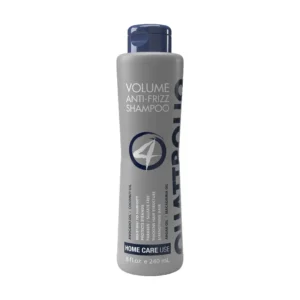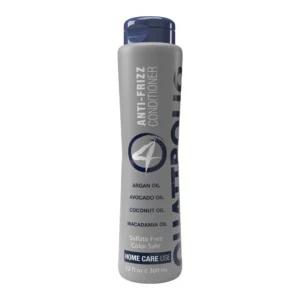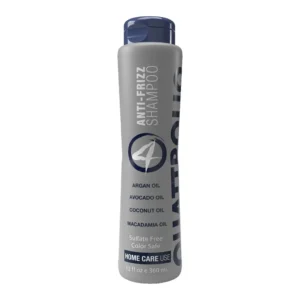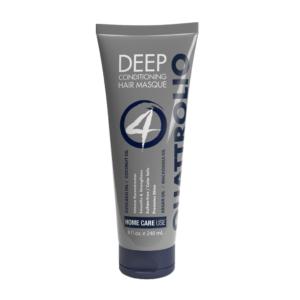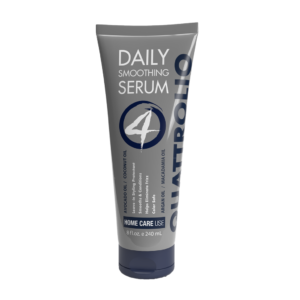Yes, the Korean Scalp Treatment is absolutely worth the hype. It’s more than just a beauty trend. Korean Scalp Treatment focuses on the root cause of hair problems of your scalp. Healthy scalp, healthy hair. Simple, right?
Unlike regular hair treatments, it targets buildup, oil, flakes, and weak roots. It deeply cleanses and nourishes the scalp. As a result, your hair looks shinier, feels stronger, and grows better. Plus, the experience feels like a relaxing spa day.
So if you’re tired of dull, lifeless hair, this might be the game changer you’ve been waiting for.
What Is Korean Scalp Treatment?
Korean scalp treatments, often called “head spas,” are a popular and in-depth approach to hair and scalp health, focusing on deep cleansing, exfoliation, and stimulation. These treatments are designed to remove impurities, unclog follicles, improve blood circulation, and promote healthier hair growth.
They typically involve a multi-step process, including analysis, exfoliation, cleansing, and massage, using specialized products and techniques.
What Makes It Different from Regular Hair Treatments?
Professional hair treatments differ from regular hair treatments primarily due to the quality of products, expertise of the professional, and the ability to target specific hair concerns. Salon treatments utilize high-grade, professional products with concentrated active ingredients, whereas at-home treatments often contain lower concentrations and may not be as effective for addressing specific issues. Professionals also have the knowledge and tools to assess individual hair needs and tailor treatments accordingly, which can lead to more noticeable and longer-lasting results compared to general at-home treatments.
1. Product Quality and Concentration:
- Salon Treatments:Employ professional-grade products with higher concentrations of active ingredients formulated to address specific concerns like damage, dryness, or frizz.
- Regular Treatments:Typically use products with lower concentrations of active ingredients, which may not be as effective for deep repair or addressing severe issues.
2. Expertise and Customization:
- Salon Treatments:Professionals can assess individual hair needs and customize treatments to address specific concerns, such as damage repair, scalp health, or frizz control.
- Regular Treatments:May not be tailored to individual needs, and may not address specific hair concerns effectively.
3. Advanced Techniques and Tools:
- Salon Treatments: Professionals have access to advanced techniques and specialized tools (like steamers) that can enhance the effectiveness of treatments.
- Regular Treatments: At-home treatments may not utilize these advanced techniques or tools.
4. Longer-lasting Results:
- Salon Treatments:Can provide more noticeable and longer-lasting results due to the quality of products and expertise of the professional.
- Regular Treatments:May require more frequent application and may not provide the same level of long-lasting results.
5. Specific Treatment Examples:
- Keratin treatments: Smooth and straighten hair, reducing frizz and adding shine.
- Protein treatments: Repair and strengthen damaged hair by replenishing essential proteins.
- Hydrating treatments: Replenish moisture in dry or damaged hair, improving softness and manageability.
In essence, professional hair treatments offer a more targeted, effective, and potentially longer-lasting solution for various hair concerns compared to regular, often generalized, at-home treatments.
Benefits of Korean Scalp Treatment
Korean hair treatments, like those offered in Korean Head Spas, offer a range of benefits including improved scalp health, enhanced hair texture and shine, and stress relief. These treatments often focus on a holistic approach, combining scalp care with nourishing hair treatments to promote healthy hair growth and overall well-being.
1. Improved Scalp Health:
- Scalp Exfoliation: Korean head spas often incorporate scalp scaling, a deep cleansing process that removes dead skin cells, excess oil, and dandruff.
- Increased Circulation: Massages and specialized techniques stimulate blood flow to the scalp, which can promote hair growth and nutrient absorption.
- Reduced Dandruff and Irritation:Ingredients like menthol, tea tree oil, and ginseng can soothe irritation and reduce dandruff, creating a healthier scalp environment.
2. Enhanced Hair Quality:
- Smoother, Shinier Hair:The nourishing ingredients and treatments in Korean hair care can repair damage, hydrate the hair, and improve overall texture, resulting in smoother, shinier hair.
- Increased Hair Strength:Targeted treatments can strengthen hair strands, making them more resilient to breakage and damage.
- Moisture Retention:Korean hair treatments often focus on replenishing moisture, helping to combat dryness and frizz.
3. Stress Relief and Relaxation:
- Relaxing Scalp Massage:The relaxing scalp massage offered in Korean head spas can help relieve tension, reduce stress, and promote a sense of well-being.
- Holistic Approach:The focus on scalp health and relaxation contributes to a feeling of rejuvenation and overall well-being.
4. Targeted Treatments:
- Hair Loss Concerns:Korean hair care routines, including scalp treatments, can be beneficial for those experiencing hair thinning or hair loss by promoting healthy hair growth.
- Addressing Specific Needs:Korean hair care products and treatments are often formulated to address specific concerns like oily scalp, dry scalp, or damaged hair.
5. Long-lasting Results:
- Improved Hair Texture:The effects of improved hair texture and shine can be long-lasting with regular treatments and proper maintenance.
- Healthy Hair Growth:By addressing scalp health and promoting nutrient absorption, Korean hair treatments can contribute to healthy hair growth over time.
Who Should Try It?
Korean Scalp Treatment is a great option for anyone dealing with common scalp or hair issues and yes, it’s for both women and men.
If you’re noticing hair thinning, excessive shedding, or a dry, flaky scalp, this treatment gets to the root of the problem literally. It’s especially helpful for people with oily scalp, dandruff, or product buildup from frequent styling.
It’s also ideal if you live in areas with hard water, pollution, or extreme seasonal weather that can throw off your scalp’s balance. If you regularly color, bleach, or heat-style your hair, this treatment can help undo the damage and restore scalp health.
Whether you’re dealing with stress-related hair fall or just want to boost growth and shine, Korean Scalp Treatment is worth a try. It’s not just a beauty fix it’s real, targeted care for your scalp.
Side Effects of Korean Scalp Treatment
Korean scalp treatments, like other hair and scalp treatments, can have potential side effects. These can range from mild irritation or dryness to more serious reactions like allergic reactions or even burns in some cases. It’s important to be aware of these potential issues and to take precautions to minimize risks.
Potential Side Effects:
- Scalp Irritation and Sensitivity:Some individuals may experience redness, itching, or dryness after a scalp treatment, especially if they have sensitive skin or if the treatment involves harsh chemicals.
- Allergic Reactions:Allergic reactions to ingredients in the treatment products can cause rashes, swelling, or other inflammatory responses.
- Chemical Burns:In rare cases, harsh chemicals used in some treatments can cause chemical burns or scabs on the scalp.
- Frizz and Texture Changes:Protein treatments, aimed at smoothing hair, can sometimes lead to increased frizz or changes in hair texture if not suited to the individual’s hair type or applied incorrectly.
- Hair Loss/Thinning:While some scalp treatments are designed to promote hair growth, certain treatments or medications used for alopecia (hair loss) can have side effects such as skin atrophy, blood vessel enlargement, hormonal imbalances, or growth inhibition.
- Infection:There’s a small risk of infection following treatments that involve breaking the skin (like PRP).
Minimizing Risks:
- Consult a Professional:Before undergoing any scalp treatment, especially if you have a sensitive scalp or pre-existing conditions, it’s crucial to consult with a dermatologist or qualified trichologist.
- Patch Test:Always perform a patch test with a small amount of the treatment product on an inconspicuous area of your scalp to check for allergic reactions before applying it to the entire scalp.
- Follow Instructions:Carefully follow the instructions provided by the professional or the product manufacturer.
- Choose Reputable Salons/Clinics:Select a reputable salon or clinic with experienced professionals who use high-quality products.
- Consider Natural Options:If you’re concerned about harsh chemicals, explore natural scalp treatments or products with gentler formulations.
Korean Scalp Treatment Process: What to Expect
The Korean Scalp Treatment process is detailed, soothing, and designed to deliver real results. Here’s a step-by-step breakdown of what typically happens during a session:
1. Scalp Analysis
The treatment usually begins with a scalp scan using a microscope. This helps identify buildup, oil levels, clogged follicles, or any signs of irritation.
2. Scalp Detox/Cleansing
A deep-cleansing scalp shampoo is applied to remove product residue, excess oil, and dead skin. This step preps the scalp for deeper treatments.
3. Exfoliation
A scalp scrub or enzyme-based exfoliant is gently massaged in to slough off dead skin cells and unclog hair follicles.
4. Steam Therapy
Warm steam is used to open pores, improve blood flow, and help active ingredients absorb better. It also adds moisture to the scalp.
5. Scalp Massage
A relaxing scalp massage improves circulation, relieves tension, and stimulates hair follicles. It’s both therapeutic and calming.
6. Treatment Serum or Ampoule Application
A targeted serum or scalp ampoule is applied based on your scalp condition—hydrating, soothing, anti-hair loss, or balancing.
7. Oxygen or LED Therapy (Optional)
Some clinics include oxygen infusion or LED light therapy to enhance healing, reduce inflammation, and energize the scalp.
8. Final Rinse & Styling
After a final rinse, the hair is gently blow-dried. You’ll often leave with visible results—lighter, cleaner roots and more volume.
The whole process usually takes 60 to 90 minutes and is non-invasive, pain-free, and deeply refreshing. You’ll walk out feeling like your scalp can finally breathe.
Key Aspects of Korean Hair Treatment
Korean hair care is more than a trend—it’s a comprehensive approach that focuses on the root of healthy hair: the scalp. It blends science, nature, and gentle care to restore balance and improve long-term hair health. Here’s what sets it apart:
Scalp Health
Scalp care is the foundation of Korean hair routines. Treatments often include scalp scrubs, tonics, and massages that boost blood circulation, remove buildup, and keep follicles clear. A healthy scalp leads to stronger, faster-growing hair.
Hair Nourishment
Deep hydration and repair are key. Products like hair masks and packs are used regularly to moisturize, strengthen, and restore shine to dry or damaged hair. They work from root to tip for long-lasting results.
Gentle Handling
Korean hair care emphasizes low-stress routines. That means minimal heat styling, avoiding tight hairstyles, and skipping harsh chemicals. It’s all about protecting your hair’s natural structure.
Product Focus
Natural, effective ingredients are a hallmark of Korean products. Look for rosemary, tea tree oil, argan oil, and ginseng—ingredients known to calm the scalp, fight dandruff, and promote healthier strands.
Popular Korean Hair Treatment Products
If you’re looking to build a Korean-style routine or extend the benefits of a scalp treatment, these product types are a great place to start:
- Scalp Treatments:
Tonics and essences help maintain a balanced scalp and support hair growth. - Hair Masks:
Deep conditioners like Shiseido Fino Premium Touch Hair Mask repair and hydrate damaged hair. - Hair Oils:
Lightweight serums, such as Mise En Scene Perfect Serum, add shine, moisture, and tame frizz. - Specialty Shampoos:
Formulas like Aromatica Rosemary Scalp Scaling Shampoo and Tea Tree Purifying Shampoo exfoliate and soothe the scalp. - Scalp Scalers:
Products like CP-1 Head Spa Scalp Scaler gently exfoliate dead skin and unclog pores, creating the perfect environment for healthy growth.
Together, these elements support the long-term health of your scalp and hair. Whether you’re recovering from damage or simply maintaining shine and volume, Korean hair care offers a thoughtful, holistic solution.
Popular Korean scalp treatment brands and salons:
- Aromatica:Offers products like Rosemary Scalp Scaling Shampoo and Rosemary Root Enhancer.
- Lador:Known for products like Wonder Balm Conditioner and Perfect Hair Fill Up Ampoule Treatment.
- Park Jun Beauty Lab:A renowned salon in Seoul offering a 15-step scalp treatment.
- Leekaja Hair:A salon with locations in Seoul and other areas, offering a similar scalp treatment.
- Apgujeong Hair Studio:Another popular salon known for its expertise in Korean hair and scalp treatments.
How often should I get a Korean Scalp Treatment?
For general maintenance, Korean scalp treatments can be done once a month, but more frequent treatments may be needed depending on your scalp condition. If you have an oily scalp, treatments every two weeks might be beneficial, while dry or damaged scalps could benefit from treatments every one to two weeks. If you have a severe scalp condition, weekly treatments might be necessary.
Here’s a more detailed breakdown:
- General Maintenance:Once a month is generally sufficient for healthy hair and scalp.
- Oily Scalp:For those with oily scalps, treatments every two weeks can help control oil production and prevent dandruff.
- Dry or Damaged Scalp:If you have a dry, flaky, or damaged scalp, more frequent treatments, perhaps every one to two weeks, can help hydrate and repair.
- Severe Conditions:If you have severe scalp conditions like dandruff, extreme dryness, or hair loss, weekly treatments might be recommended.
- Consult a professional:It’s always a good idea to consult with a dermatologist or trichologist to determine the best treatment schedule for your specific needs.
By understanding your scalp type and any specific concerns you might have, you can determine the most effective frequency for your Korean scalp treatments.
Is it safe for color-treated or chemically processed hair?
Korean scalp treatments are generally safe for color-treated or chemically processed hair, but it’s crucial to consider the specific products and ingredients used. Some treatments, especially those involving heat or strong exfoliants, might slightly lift color or keratin if done too soon after the chemical treatment.
However, many Korean scalp treatments are designed to be gentle and can actually improve the health of the scalp, which can indirectly benefit color-treated hair by promoting a healthy environment for hair growth.
- Benefits for Color-Treated Hair:Korean scalp treatments can help to remove product buildup, excess oil, and dead skin cells, which can be particularly beneficial for color-treated hair that may be prone to dryness or dullness.
- Potential for Color Fading:Some treatments, particularly those involving strong exfoliants or heat, may slightly lift color if applied too soon after dyeing or bleaching. It’s recommended to wait at least a week after any chemical service before getting a scalp treatment.
- Choosing the Right Treatment:Look for treatments that focus on gentle cleansing, hydration, and scalp nourishment. Avoid treatments with harsh sulfates, alcohol, or excessive heat, especially if you have color-treated or chemically processed hair.
- Ingredients to Consider:Natural ingredients like aloe vera, chamomile, and tea tree oil are often used in Korean scalp treatments and can be soothing and beneficial for sensitive or irritated scalps.
- Consultation is Key:Always consult with the salon or spa about your specific hair type and chemical treatments before undergoing any scalp treatment. They can advise on the best course of action and recommend suitable products.
In summary, Korean scalp treatments can be a great addition to your hair care routine, even if you have color-treated or chemically processed hair. However, it’s essential to choose treatments carefully, consider the timing of the treatment in relation to any chemical services, and consult with professionals to ensure the best results.
Can Korean Scalp Treatment treat scalp acne or bumps?
Yes, Korean scalp treatments can be beneficial for treating scalp acne and bumps. Many Korean scalp treatments focus on deep cleansing and using ingredients that target acne-causing bacteria and inflammation, which can help to clear up existing acne and prevent future breakouts.
How do they help with scalp acne and bumps?
- Deep Cleansing:Scalp treatments often include exfoliating ingredients (like salicylic acid or glycolic acid) that remove excess sebum, dead skin cells, and product buildup, which can clog pores and lead to acne.
- Anti-inflammatory and Antimicrobial:Many Korean scalp treatments incorporate ingredients that help to reduce inflammation and kill acne-causing bacteria.
- Targeted Ingredients:Some treatments may include ingredients like tea tree oil or other natural extracts known for their antibacterial and anti-inflammatory properties.
- Improved Circulation:Some treatments may also incorporate massage techniques or therapies that can improve blood circulation to the scalp, promoting healthy hair growth and potentially reducing inflammation.
Specific ingredients to look for:
- Salicylic acid: Helps to exfoliate and unclog pores.
- Tea tree oil: Has antibacterial and anti-inflammatory properties.
- Glycolic acid: Exfoliates and helps to remove dead skin cells.
- Antifungals like ketoconazole or ciclopirox: Can help with fungal-related scalp issues that may contribute to acne.
- Anti-bacterial ingredients: Kill acne-causing bacteria.
Important Considerations:
- Individual needs:It’s crucial to assess your specific scalp condition and choose a treatment that is appropriate for your needs. Some treatments may not be suitable for all hair types or scalp conditions.
- Professional advice:Consulting with a dermatologist or trichologist (hair and scalp specialist) can help you determine the best treatment plan for your scalp acne or bumps.

